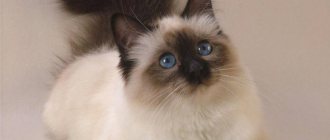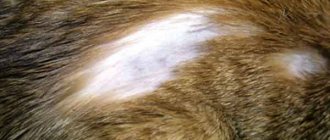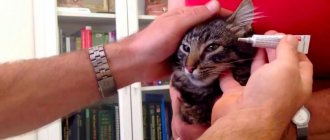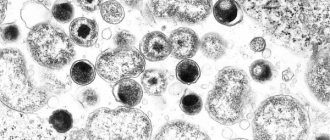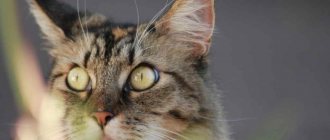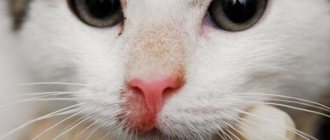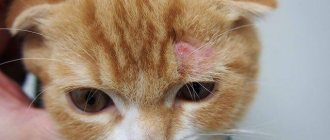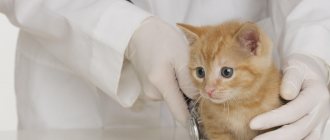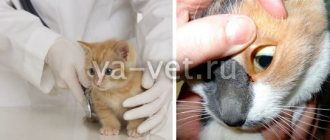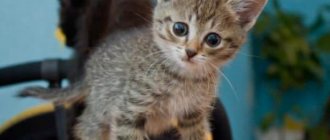Save the article:
If a cat has hairless areas on its body, peeling, redness, itching of the skin, there is a high probability that the pet has contracted lichen .
Ringworm is a highly contagious mycotic disease that affects both animals and humans. The causative agent of the disease is a microscopic fungus of a certain type. Depending on the type of fungus, the disease looks and is treated differently. The same ringworm in a cat can be caused by different fungi.
First, the skin is damaged, then the disease spreads to the fur and claws. First of all, weak or injured animals catch the disease, but good health does not guarantee that the disease will pass by.
global $ads_google; //data-ad-slot=”2475549904″ $ads_google = empty($ads_google) ? false : true; ?> if ($ads_google == false) {?>
$ads_google = true; ?> } ?>
The problem is very serious, and the disease is easily transmitted from cat to person, so when the first symptoms are detected, treatment begins.
Types of lichen in cats
The word “lichen” is used in everyday life to refer to baldness of the fur and skin of animals, but this name hides various diseases with a specific etiology.
Types of cat lichen and danger to humans:
- Ringworm, or dermatophytosis. The causative agents are dermatophyte fungi. Microorganisms of the genus Microsporum and Trichophyton parasitize cats; they cause the diseases microsporia and trichophytosis. Fungi feed on keratin, which is part of wool, skin, and claws. Spores live up to 2 years in a warm and humid external environment. Dermatophytosis is transmitted to humans and mammals.
- Pityriasis, or multi-colored. The disease is caused by yeast-like fungi Pityrosporum; they live on the skin of a healthy cat. Pathological changes begin when the immune system ceases to restrain their reproduction. Lichen versicolor is not transmitted to people and animals with strong immunity, but the risk of infection cannot be ruled out when the defenses weaken.
- Pink, or Gibert's disease. The etiology has not been fully identified. Some doctors consider it a viral infection, others – an allergic reaction. Pathology is transmitted to animals. It also occurs in humans, but they cannot become infected from a cat.
- Weeping, or eczema. This disease is of non-infectious origin and is not contagious to humans or mammals. The reasons are not entirely clear. Presumably develops due to disorders of the endocrine, immune, nervous systems or as a manifestation of allergies to food, detergents, parasites.
- Shingles does not occur in cats. This disease is caused by the Varicella-zoster and occurs only in humans.
Ringworm
Now let’s take a closer look at what ringworm is in a cat. It is one of the most dangerous and common types of lichen. What is the danger and insidiousness of this disease? The fact is that the incubation period for lichen in cats can last from several days to several months. Other animals and unsuspecting people become infected. It is especially dangerous for long-haired breeds, since the hair prevents the first signs of the disease from being seen. How to treat ringworm in cats will be discussed a little later.
Let's consider what is the causative agent of ringworm? These are dermatophyte molds. There are two forms of ringworm:
- - microsporia;
- - trichyphytosis.
- What happens with microsporia?
- - hair fragility appears at the skin level;
- - wool hair is easily pulled out.
When hair falls out, other animals and people become infected with fungal spores.
Trichophytosis, the second form of the fungus, is very rare. With this type of ringworm, baldness appears only in the head and neck area.
There are three forms of the disease:
- -superficial;
- -deep;
- -atypical.
With a superficial and atypical form of ringworm in cats, for a long time it is impossible to notice that the disease process has already begun.
It is very important to identify the disease at an early stage; the method and time of treatment for your pet will depend on this.
Who is at risk and can get ringworm?
- -most often these are small kittens;
- - long-haired breeds (genetically predisposed to such diseases);
- - cats with malignant processes in the body;
- - cats infected with parasites;
- -young cats up to one year of age.
One of the most pressing and exciting questions is how is lichen transmitted from cats? Unfortunately, ringworm is contagious to humans. You love your pet, pet it, pick it up. Yes, usually upon contact the process of lichen infection occurs. This happens especially easily if there are scratches, wounds, or abrasions on your hands. You can become infected by dandruff, scales, and hair falling from a cat. Children can become infected very easily while playing in the sandbox. Your home, bowls, rugs, combs, etc. are contaminated. Fungal spores are very stable and viable. Will the person get sick or not? It depends on the type of lichen and the person’s immunity. Children and people with weakened immune systems are at risk.
What happens if you don't treat lichen in a cat?
Any lichen violates the integrity of the animal’s skin, which in turn leads to an increased likelihood of infection by bacteria. If you don’t treat your cat for ringworm at all, the first outbreak will grow. Then new patches of baldness will appear on the body, which the animal will comb. If severe itching occurs, the cat will stop eating normally and begin to lose weight. Losing weight, in turn, will weaken the immune system. Possibly the scratches become infected. As a result, with a high degree of probability the cat will die, but not immediately, but in the range of 3-12 months.
In addition, a sick animal infects healthy ones who live nearby, and can also serve as a source of human infection if we are talking about fungal species.
Who is susceptible to the disease
According to statistics, cats with compromised immunity are susceptible to the disease, including individuals who are experiencing a period of another illness or are weakened.
Also, rapid infection with lichen fungus occurs in old cats and kittens; animals with long hair also fall into the category of quickly catching the disease.
Ringworm is often found in purebred cats, for example, Persian cats, since they are artificially bred and do not have natural immunity to this disease.
Some cats can only be carriers of lichen. That is, infection with lichen occurs, but the disease does not begin. And when such a pet begins to come into contact with other animals, they may contract the disease.
Sources of infection, risk factors and pathogenesis
Ringworm of fungal and viral origin is transmitted by contact: after contact with a sick animal, through shared objects.
Dermatophyte spores also live in the soil, so they enter the house on outdoor shoes and clothes or with street air. Mice and rats become carriers.
Ringworm, regardless of the variety, is more common in animals with weakened immune systems.
Predisposing factors:
- chronic diseases;
- viral and bacterial infections;
- unbalanced diet;
- helminths and ectoparasites;
- long-term medication use.
The risk group includes kittens, elderly and young cats under one year old: their immune system either has not had time to strengthen or has weakened. The likelihood of infection with the fungus increases in long-haired animals and those who walk unattended.
Each type of lichen begins with a single lesion with damaged or lost hairs. Further development is different. With any disease of fungal etiology, new foci appear over time, they grow and merge. In the absence of treatment, the lesion becomes generalized and bacterial infectious diseases are added.
With rosacea, one maternal spot also appears first, then others surround it, but after 1–2 months they spontaneously disappear. The development of eczema is difficult to predict: the disease fades away if the causes are identified and eliminated in time.
Professional treatment
The pathology is difficult to treat, so owners must be prepared for a long course of treatment (1-1.5 months). This is due to the high viability of fungal spores and possible re-infection of the animal.
initial stage
For a small area of skin damage, special antifungal drugs for external use are prescribed as medications:
- Ointments;
- Sprays;
- Creams;
- Shampoos.
Of the ointments, Miconazole is the most effective.
Miconazole is an antifungal and anti-inflammatory drug that is used in veterinary medicine and human therapy to treat fungal diseases. The active ingredient of the drug is miconazole nitrate. The medicine has a bactericidal effect on a number of gram-positive and gram-negative bacteria. The ointment is inexpensive - from 85 to 100 rubles. in Russian pharmacies, 27 UAH. in Ukrainian pharmacies.
Owners of long-haired cat breeds are advised to trim the hair in the affected areas.
Severe form
In severe cases of pathology, complex treatment is necessary - in addition to external medications, oral medications are prescribed:
- intraconazole,
- terbinafine,
- griseofulvin.
The course and dosage of these medications is prescribed by a veterinarian. According to reviews on the Internet, Itraconazole is considered the most effective drug. You will find a description of these and other drugs below.
Do not forget that all objects that come into contact with a sick animal must be thoroughly disinfected.
Important!
All medical procedures must be carried out in disposable medical gloves - lichen is contagious to humans!
External preparations – ointments, solutions, sprays
Fungin
The drug, designed to fight fungal disease, is available in the form of a solution and spray.
The active ingredient of Fungin is clotrimazole, and the auxiliary ingredients are propolis and glycerin.
The drug is applied to the affected areas and lightly rubbed into them. Treatment is carried out regularly for two weeks, after which a control examination of skin scraping is recommended.
Manufacturers promise no side effects, but in reviews of animal owners there are references to excessive salivation, gastrointestinal disorders and skin reactions sometimes after using Fungin.
- A 30 ml bottle costs 85 hryvnia in Ukraine, and 310 rubles in Russia.
- The price of a spray (30 ml) in Ukraine is 115 hryvnia, in Russia – 415 rubles.
Yam ointment
They say that this ointment has no analogues. It’s difficult to judge, but the effectiveness of this drug is really very high.
According to the instructions, the ointment is applied in a thin layer to the affected areas of the skin at least twice a day for at least a week. After this period, the crusts disappear and hair begins to grow at the treatment site again.
Manufacturers do not hide the composition of Ointment Yam. These are salicylic acid, zinc oxide, sulfur, tar, turpentine, etc. The main thing is that the drug has astringent and antiseptic properties.
The price of a 20 gram package is 18 hryvnia in Ukraine and 75 rubles in Russia.
Sanoderm
The Ukrainian drug has both anti-inflammatory, anti-allergenic and antibacterial properties.
This versatility is ensured by the inclusion of betamethasone, which inhibits the accumulation of leukocytes, the antifungal clotrimazole and the broad-spectrum antibiotic gentamicin.
The course of treatment with Sanoderm is on average 2-4 weeks.
The product is available in 15 gram tubes.
Price: 55 hryvnia – in Ukraine, 110 rubles – in Russia.
Miconazole
Miconazole belongs to a group of drugs that works equally well in animals and humans. This ointment (made in Ukraine) is active against parasitic and pathogenic fungi, yeast, and bacteria (including gram-positive ones). The active ingredient is miconazole.
Treatment with Miconazole must be carried out for up to 6 weeks. Please note that even after the symptoms disappear, you need to treat the skin with this product for another two to three days.
A 15 gram tube is sold in Ukraine for 30 hryvnia, in Russia – for 163 rubles.
Imaverol
An effective drug for the treatment of fungal infections, available in the form of an emulsion for external use. The medicine does not penetrate deep into the tissue and acts on skin surfaces affected by lichen. It is quickly eliminated from the body naturally.
In veterinary medicine it is used as part of complex therapy as prescribed by the attending physician. The active ingredient of the drug, enilconazole, destroys fungal spores at the cellular level. Maximum effectiveness of the product is achieved when used simultaneously with other drugs.
Before use, the emulsion is diluted with water in a ratio of 1:5.
The course of treatment consists of 4 procedures, which are carried out at intervals of 4 days.
The price of a bottle (100 ml) is 1,450 rubles in Russia, 845 hryvnia in Ukraine.
Fukortsin
Disinfectant and antiseptic from Ukrainian pharmacists is available in 25 ml bottles.
The composition contains acetone, boric acid and resorcinol.
Veterinarians recommend treating animals with Fukortsin about 3 times a day until the symptoms of the disease (including crusts) completely disappear.
In Ukrainian pet pharmacies, Fukortsin (25 ml) is sold for 10 hryvnia, and in Russian - from 39 rubles.
Oral medications – tablets, capsules
Intraconazole
A synthetic antifungal drug is highly effective against ringworm. The active ingredients of the drug suppress the reproduction and development of the fungus. The drug is intended for oral use and is available in capsules. Approved for use in the therapy of cats and dogs, as well as people.
It is used as prescribed by a veterinarian in the complex treatment of ringworm.
The course of treatment is at least 1 month.
Price: pack (14 caps) in Ukraine – 43 hryvnia, in Russia – 320 rubles.
Terbinafine
Antifungal tablets prevent further spread of parasites and have a pronounced anti-inflammatory effect. The drug is administered orally as part of complex therapy for animals. The course of treatment and dosage must be selected by a veterinarian.
The course of treatment ranges from 32 to 34 days. The drug is best given to the cat during feeding once a day. At the end of the course, the dose is reduced - 1 tablet every two days.
Price: packaging (10 tablets) in Ukraine – 45 UAH, in Russia – 140 rubles.
Griseofulvin
An antifungal antibiotic with a cumulative effect. The active ingredient of the drug is Griseofulvin. The drug stops the cell division of the fungus. In veterinary medicine it is used to treat ringworm in cats and kittens. Not for use in animals with kidney and liver diseases, during pregnancy and lactation.
The medicine is given orally during feeding 2 times a day. Recommended dosage: 10 mg. per 1 kg. animal weight.
Course of treatment: 3-5 weeks.
Price: pack (20 tablets) – 195-220 rubles. in Russia, packaging (40 tablets) – 44-45 UAH. in Ukraine.
Symptoms of lichen in cats
Breeders are often afraid of how to tell if a cat has lichen or not, preferably at home and without special diagnostic tools. The only thing you can rely on is the symptoms, but they may be mild, and it is better to consult a veterinarian. But the first symptom with which lichen begins is the baldness of areas of the coat.
Visually, types of lichen are distinguished by the nature of the affected areas:
| Ringworm: | Pityriasis versicolor: |
|
|
| Deprive Zhibera: | Ringworm: |
|
|
Pink and weeping are accompanied by itching, with ringworm it is weak, with pityriasis it is absent.
Causes of infection
A domestic cat that does not leave the apartment is least likely to become infected. Ringworm is usually found in animals that are allowed outside.
The most common causes of the disease:
- direct contact with rodents, which are the main carriers of this disease;
- interaction with another animal (cat or dog) that is already infected or is still only carrying fungal spores;
- remnants of fungal spores on furniture, carpets and other surfaces of the house that were not treated after treatment of ringworm.
In adult healthy animals, in most cases, there is genetically determined resistance to this disease. Weakened immunity and advanced age increase the risk of lichen.
How to understand that a cat has lichen
External signs are not enough to distinguish between fungal and non-infectious types of dermatitis.
The veterinary clinic uses three laboratory methods:
- Wood's fluorescent lamp examination . The rays of the device paint areas affected by fungi green. The method is considered inaccurate: sometimes healthy tissues glow due to the effects of drugs and synthetic detergents, but individual yeast-like microorganisms are not illuminated.
- Microscopic examination . Hairs and skin scrapings from damaged areas are examined under magnification. This method also does not provide 100% accuracy: in sick animals, pathogen cells are sometimes not detected.
- Mushroom cultivation . The method is more reliable than the others, but you will have to wait up to 3 weeks for the results. Skin scrapings are placed in a nutrient solution, changes are observed, and then examined under a microscope.
At the same time, urine, feces and blood are taken from the cat for clinical and biochemical tests, and the state of health is determined.
Drugs for the treatment of lichen in cats
Treatment regimens for different types of lichen differ; their doctor chooses them based on a laboratory-confirmed diagnosis and the severity of the disease. Self-treatment will either be useless or harm the cat.
Ringworm and pityriasis
Both types are fungal infections, so the same medications are suitable for them:
- Vaccines. Russian clinics use the drugs Microderm and Vakderm ; they are prescribed for both prevention and treatment. In the first case, it is administered twice, in the second three times with an interval of 10 days. There is no consensus on the benefits of vaccinations; some doctors doubt the effectiveness of vaccines, and they do not use them in foreign clinics.
- External agents with antifungal components. These include shampoos, ointments, sprays, liniments, solutions - prescribed when there are few lesions. Before use, the skin is cleaned of dirt and crusts, the hair is cut off, preferably with a reserve around the affected area. Be sure to put a protective collar on the pet’s neck and rub the medicine into the affected areas with a cotton pad. Fungin , Fucoricin , Sanoderm , Clotrimazole , Thermikon are suitable for cats . Once a week, bathe the cat with Sebozol or Nizoral : after this, the condition of the coat improves and the itching decreases. Do not wash with ordinary shampoo, as water quickly spreads spores throughout the body.
- Oral medications. Tablets are prescribed when local remedies do not provide an effect for more than 2 weeks, or for extensive lesions. For cats , Griseofulvin, Itraconazole, and Ketoconazole are used. The medications are developed for humans, so the dosage for cats is calculated by a veterinarian.
At the same time, fungal spores are destroyed in the apartment: the pet’s bedding is changed, the floor is washed, and care items are washed with disinfecting solutions. Treatment lasts from 3–4 weeks.
Wet and pink
Zhiber's disease does not require special therapy; self-healing occurs after 4–6 weeks.
Human help consists of caring care. The pet’s diet is enriched with vitamins, sore spots are treated with apple cider vinegar, and the immune system is supported with Ribotan and Anandin . The animal should not be bathed or left in the sun.
For effective treatment of weeping lichen, it is important to establish the causes. The doctor determines internal disorders using blood and urine tests. The owner looks for the source of the allergy at home: changes food, pet shampoo, treats the pet for parasites. Skin inflammations will help reduce ointments: sulfuric, ichthyol, Yam BK, salicylic. Recovery is judged by changes in the affected areas: the skin becomes even, peeling and inflammation disappear, new hairs grow, which means the pet is recovering.
Treatment at home
If for some reason you cannot contact a veterinarian, then there is only one way out - try traditional methods.
Method 1
You will need:
- iodine;
- vegetable oil;
- ash (from newspaper or from raspberry or currant branches).
Application:
- burn paper (twigs) to obtain ash and mix with vegetable oil until pasty;
- treat the area of trimmed skin and the fur around it with iodine;
- apply a pasty substance of ash and oil to the areas treated with iodine;
- repeat several times a day.
Important!
The method is considered effective, but it is not safe for the animal - iodine is very toxic to cats.
Method 2
You will need:
- 5% iodine;
- Valerian tincture;
- sunflower oil.
Application:
- take 1 teaspoon of each product;
- mix all components;
- lubricate the affected areas of the animal’s body with the resulting solution;
- repeat 3 times a day.
Method 3
You will need:
- medical alcohol;
- acetylsalicylic acid.
Application:
- take 30 ml of alcohol and add a crushed tablet of acetylsalicylic acid to it;
- Shake the mixture thoroughly until the tablet is completely dissolved;
- Apply the solution to the affected skin with a cotton swab;
- Perform treatment once every 5-7 days;
- The crusts from the wounds should dry out and fall off on their own; there is no need to remove them.
Important!
Remember that no traditional method guarantees a 100% cure for the animal. If the disease progresses, contact your veterinarian immediately!
Prevention for cats and people
Prevention measures for cats:
- the cat is fully fed;
- they are not allowed to go for walks on their own;
- treated against external and internal parasites;
- take care of the coat: regularly inspect, wash, comb out;
- do not ignore vaccination;
- keep the animal's area clean.
Prevention measures for humans:
- wash your hands after contact with stray animals;
- observe the rules of personal hygiene;
- in case of contact with a sick cat, use rubber medical gloves;
- If you don’t have gloves, wash your hands thoroughly and treat them with a 70% alcohol solution.
A variety of pharmaceutical drugs can help successfully treat your pet from shingles. The main thing is to be patient and meticulously follow the veterinarian’s recommendations.
